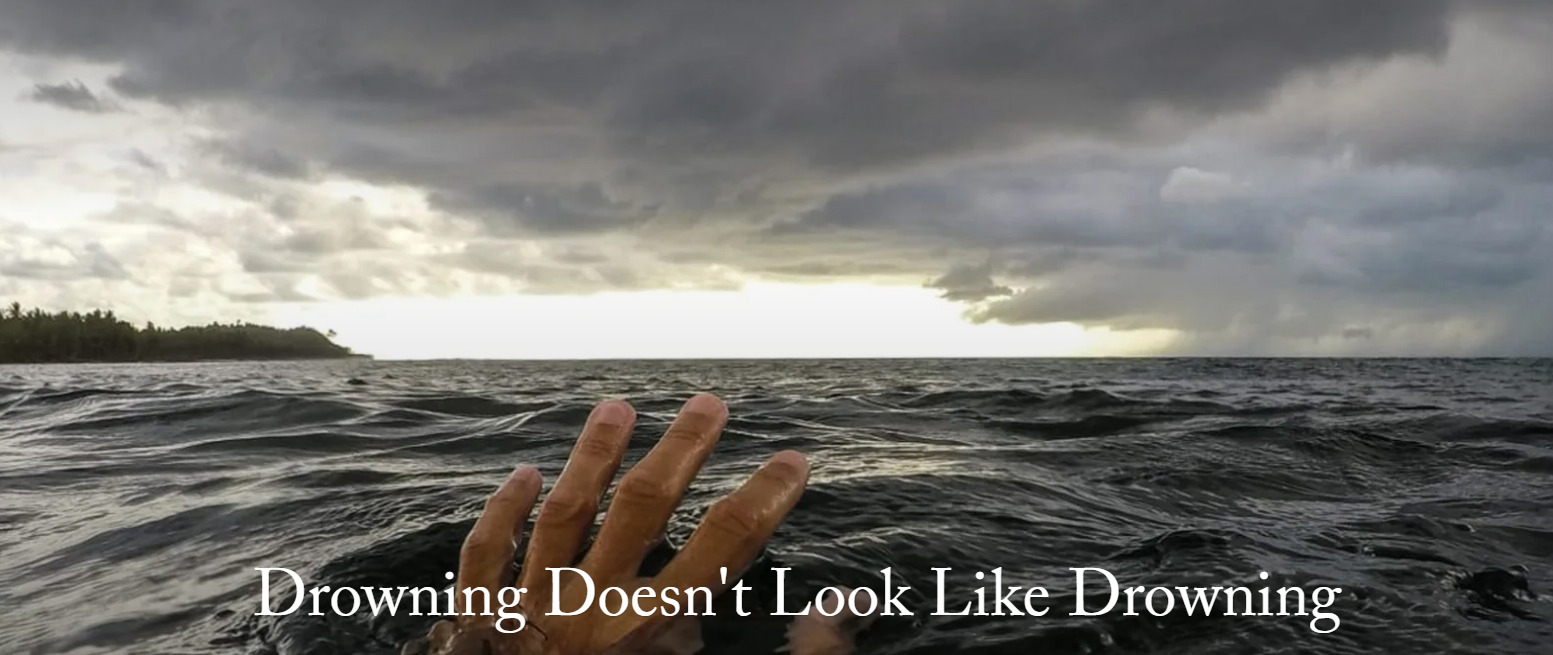
This is a frightening blog title for a short story. However, it is true. After talking to a few people who have nearly drowned and after hours of research, I have learned a terrible fact… it is so easy to drown.
Unfortunate Deadly Statistics
Nearly 236,000 people per year drown. That’s a worldwide number. In the U.S., 3,500 – 4,000 people drown on an annual basis. That is about 10 – 11 people per day.
Unfortunately, children under five years of age are at the most risk. Most children under the age of 4 drown in swimming pools. Fatal drownings are the second-leading cause of unintentional deaths behind automobile crashes for children ages 1 – 14.
This is How Quickly it Can Occur
For an adult, it takes only 60 second to drown. For a child, it happens even faster… approximately 20 seconds according to the US Army Corp of Engineers (USACE). Non-swimmers are usually too exhausted and can’t do much of anything so sometimes they drown even faster.
At one time, drowning was used as a method of execution for hundreds of years. In the 17th century, this method of execution was outlawed.
It was brought back later for one “spooky” reason… witches. A person who was suspected of being a witch had heavy chain weights connected to their legs and they were thrown into deep water. If they floated, they were declared a witch and burned at the stake. On the other hand, if they drowned… well, too bad!
It is Not Easy to See Notice Someone Drowning
You have probably seen examples of drowning on TV and movies. Drowning looks a lot different in real life. Normally, there is NOT a lot of thrashing and yelling. It is usually pretty silent. That’s why it is so easy to happen!
Much of the time, it is a silent act. The person’s mouth sinks below the surface of the water, and then reappears as they try to breathe. Once they can no longer hold their initial breath, then they start to hyperventilate. They will start gulping water and their lungs start filling with water. Unknowingly, but naturally, a condition called laryngospasm will occur. This is where the person’s vocal cords will “spasm”, blocking the air waves and protecting the lungs. However, this condition makes it almost impossible to yell for “Help”.
Since the person cannot get any fresh air, their oxygen supply starts to fall. This leads to hypoxia. Hypoxia is the condition when there is not enough oxygen getting to a person’s living tissues. Eventually, when the person becomes unconscious, there is a relaxation in the person’s vocal cords and air ways allowing the person’s lungs to consume more water.
All of This Happens Quickly. That’s Why it is so Easy to Drown!
Depending on how long the person has gone without air, various levels of damage can occur. For example, a study done in 2013 found that there was very little hope for surviving with little or no brain damage if submerged for 10 minutes or more.
The lack of oxygen can also lead to cardiac arrest. Or, it can also lead to a symptom called “delayed drowning”. You can speak and breathe normally, but later in the day, your lungs fill with water and you drown.
There is one take away here… your body REALLY needs oxygen. It is so easy to drown.
Life Saver Survivor Swim School is Trying to Prevent Drownings
We are realistic and we know we can prevent all drownings. However, you can sure bet we’re trying to do our best to prevent as many as we can.
Give Bonnie, the owner of Life Saver Survival Swim School a call if you have children that might still need to learn the life-saving skills of floating and or swimming. Or, perhaps they just need to improve their skills. Email her if you prefer to do that… Email her HERE.

